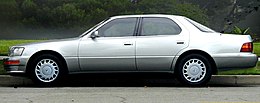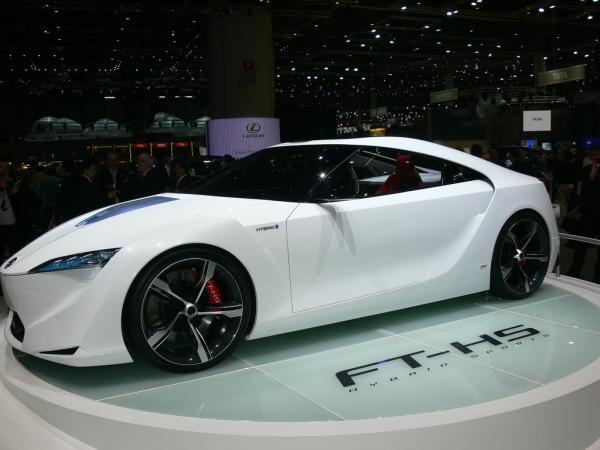
Lexus is the luxury vehicle division of Japanese automaker Toyota Motor Corporation. First introduced in 1989 in the United States, Lexus is now sold globally and has become Japan's largest-selling make of luxury cars. As of 2009, Lexus vehicles are officially marketed in over 70 countries and territories worldwide.[1] The Lexus marque has ranked among the top ten Japanese global brands in market value.[2] The division's world headquarters are located in Toyota, Aichi, Japan, with operational centers in Brussels, Belgium, and Torrance, California, United States.
Lexus originated from a clandestine flagship sedan project that began in 1983. This effort developed into the original Lexus LS, which was the first vehicle to wear the Lexus marque upon its launch in 1989. In following years, Lexus added sedan, coupé, convertible, and SUV models. In 2005, a hybrid version of the RX crossover debuted, and additional hybrid models were subsequently introduced to the Lexus lineup. In 2007, Lexus launched its F marque performance division with the arrival of the IS F sport sedan.
From the start of production, Lexus vehicles have been consistently produced in Japan, with manufacturing centered in the Chūbu and Kyūshū regions, and in particular at Toyota's Tahara, Aichi, Chūbu and Miyata, Fukuoka, Kyūshū plants. Assembly of the first Lexus built outside the country, the Ontario, Canada-produced RX 330, began in 2003. Following a corporate reorganization from 2001 to 2005, Lexus operates its own design, engineering, and manufacturing centers, solely responsible for the division's vehicles.
History
1980s: The F1 project

In 1983, Toyota chairman Eiji Toyoda summoned a secret meeting of company executives, to whom he posed the question, “Can we create a luxury vehicle to challenge the world's best?” question prompted Toyota to embark on a top-secret project, code-named F1 (“Flagship” + “No. 1 vehicle”). The F1 project, whose finished product was ultimately the Lexus LS 400, aimed to develop a luxury car that would expand Toyota’s product line, giving it a foothold in the premium segment and offering both longtime and new customers an upmarket product. The F1 project followed the success of the Toyota Supra sports car and the luxury Toyota Cressida models. Both the Supra and Cressida were rear-wheel drive cars with a powerful 7M-GE/7M-GTE engine. The opportunity for Japanese manufacturers to export more expensive models had arisen with the 1980s voluntary export restraints, negotiated by the Japanese government and U.S. trade representatives, restricting mainstream car sales. In 1986, Honda launched its Acura marque in the U.S., influencing Toyota's plans for a luxury division. the same time, Nissan would unveil plans to create its own luxury division, Infiniti, while Mazda also considered developing a luxury division, to be called Amati.
Toyota researchers visited the U.S. in May 1985 to conduct focus groups and market research on luxury consumers. That summer, several F1 designers rented a home in Laguna Beach, California to observe the lifestyles and tastes of American upper-class consumers.’s market research concluded that a separate brand and sales channel were needed to present its new luxury flagship, and plans were made to develop a new network of dealerships in the U.S. market
 Lexus CAR
Lexus CAR Lexus
Lexus
 Lexus
Lexus Lexus
Lexus  Lexus
Lexus Lexus
Lexus Lexus
Lexus